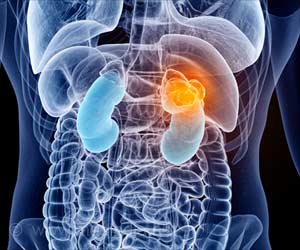Recently, new guidelines and principles were issued to rehabilitate drug offenders
Recently, new guidelines and principles were issued to rehabilitate drug offenders. The 13 principles are contained in a report prepared by the National Institute on Drug Abuse (NIDA), a division of the National Institutes of Health (NIH). The report, which is titled, Principles of Drug Abuse Treatment for Criminal Justice Populations, uses some of the work conducted by University of Kentucky Researchers Michele Staton-Tindall, Assistant Professor in the Department of Behavioral Science and Center on Drug and Alcohol Research (CDAR) and Carl Leukefeld, Professor of Behavioral Science and Director of CDAR.
Findings from Staton-Tindall's 2003 Kentucky study were used to profile the substance use, mental health problems, health problems and treatment history of incarcerated women. These findings point out the unique issues of women in criminal justice settings. The article is one of only wo peer-reviewed articles cited in the entire NIH report.Staton-Tindall and Leukefeld's research is part of the NIDA/NIH-funded Central States Criminal Justice Drug Abuse Treatment Research Systems (CJ-DATS) Center in Lexington. It is one of nine such centers in the U.S. The CJ-DATS Center studies drug abuse interventions in the criminal justice system. The goal of the research is to develop, implement, and test interventions to reduce recidivism, drug abuse and crime.
It is estimated that 70 percent of people incarcerated in state prisons and local jails, in Kentucky and elsewhere, have at some point been regular drug users – compared to approximately 9 percent of the general population. Despite these figures, only about 20 percent of incarcerated offenders receive any rehabilitation treatment. Lawmakers and taxpayers have long been loathe to approve extensive drug abuse treatment programs, fearing financial costs. Drug abuse costs communities every day, in the form of prison expenses, court costs, property damage, violent crimes, emergency room and other medical care, child abuse and neglect, lost child support, foster care and welfare costs, reduced workplace productivity, unemployment and the need to provide services to those victimized by drug abusers. Nora Volkow, NIDA Director, recently reported that the estimated cost to society of drug abuse in 2002 was $181 billion. Of that figure, $107 billion in costs were associated with drug-related crime. However, according to research conducted at UK, every dollar spent on addiction treatment results in a four to seven dollar reduction in community spending on drug-related crimes.
"The Kentucky Department of Corrections has made significant progress toward addressing the issue of substance abuse among offenders by not only increasing the number of treatment programs in correctional facilities in the last four years, but also implementing a new treatment evaluation program in conjunction with UK-CDAR, indicating that the Department is invested in both quantity and quality of treatment programming," said Staton-Tindall. Reductions in overall crime rate also are apparent with implementation of jail and prison-based rehabilitation programs.
The NIDA/NIH guide utilizing the research of Staton-Tindall and Leukefeld is part of the standard set of government recommendations for treating drug abusers in the criminal justice system and to better understand how to develop programs that provide both effective treatment for offenders and cost-effective solutions for communities fighting drug abuse.
Source: Eurekalert






